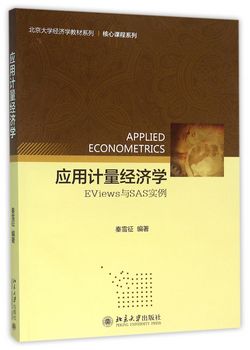英语语用学 / 华大博雅高校教材、外语语言文学系列教材
定价:¥24.00
作者: 高晓芳
出版时间:2012-08
出版社:华中师范大学出版社
- 华中师范大学出版社
- 9787562236986
- 1-2
- 124062
- 51183274-3
- 平装
- 16开
- 2012-08
- 250
- H313
- 外语
- 本科 高职
内容简介
本书采用全英语编写而成,梳理、介绍语用学的沿革、理论、方法及研究前沿。全书共七章,内容涉及学科缘起、语用意义、指示、含义、合作原则、关联理论、预设、言语行为理论及会话分析。此外,每章还附有练习、思考问题和阅读书目。对从事语用学专题研究的英语专业工作者来说,本教材不失为一本有用的参考书;同时,它也是英语专业的本科生、研究生和英语爱好者们的良师益友。
目录
Chapter Ⅰ Pragmatics and pragmatic aspects of language use 1.1 A historical overview of the term "pragmatics" 1.2 Pragmatics as a branch of linguistics 1.3 Pragmatic aspects of language use 1.3.1 Appropriacy 1.3.2 Indirect meaning 1.3.3 Indeterminacy 1.3.4 Context 1.4 The scope of pragmatics Exercises and reviewing questions Further readingChapter Ⅱ Deixis 2.1 The notion of deixis 2.2 Deictic usage n-deictic usage 2.3 Types of deixis 2.3.1 Person deixis 2.3.2 Time deixis 2.3.3 Place deixis 2.3.4 Discourse deixis 2.3.5 Social deixis Exercises and reviewing questions Further readingChapter Ⅲ Implicature and cooperative principle 3.1 The notion of conversational implicature 3.2 Cooperative principle in theory of conversational implicature 3.3 Types of conversational implicature 3.3.1 Standard conversational implicature via observing maxims 3.3.2 Particularized conversational implicature via flouting maxims 3.3.3 Generalized conversational implicature 3.4 Features of conversational implicature 3.5 Importance of Grice's theory of conversational implicature 3.6 Conventional implicatures Exercises and reviewing questions Further readingChapter Ⅳ Relevance theory 4.1 General introduction 4.2 Cognitive environment and mutual manifestness 4.3 Relevance and cognitive principle of relevance 4.3.1 Relevance 4.3.2 Cognitive principle of relevance 4.4 Relevance and communication 4.4.1 Optimal relevance 4.4.2 Communicative principle of relevance 4.5 Ostensive-inferential communication 4.5.1 Ostensive communication on the part of the communicator 4.5. Further readingChapter Ⅴ Presupposition 5.1 Philosophical background 5.2 Semantic presupposition 5.2.1 Presupposition triggers 5.2.2 Defeasibility 5.2.3 The projection problem 5.3 Pragmatic presupposition Exercises and reviewing questions Further readingChapter Ⅵ Speech act theory 6.1 Introduction 6.2 Austin's speech act theory: origin and foundation 6.2.1 Constatives and performatives 6.2.2 Felicity conditions 6.2.3 Features of performatives 6.2.4 Three kinds of speech act 6.2.5 Austin's classification of illocutionary acts 6.3 Searle's speech act theory: revision and development 6.3.1 The redefinition of speech act 6.3.2 Reclassification of speech act 6.3.3 Searle's felicity conditions 6.3.4 Reclassification of illocutionary acts 6.3.5 Indirect speech acts 6.4 The late development of speech act theory 6.4.1 The study on perlocution 6.4.2 The applied study of speech acts Exercises and reviewing questions Further readingChapter Ⅶ Conversation analysis 7.1 Introduction 7.2 Turn-taking 7.2.1 Definition and features of turn-taking 7.2.2 The turn-taking system 7.3 Adjacency pairs 7.4 Conversation structure 7.4.1 Overlap, pause and backehannel item 7.4.2 Pre-sequences, insertion sequences and post-sequences 7.5 Preference organization 7.5.1 Preference in repairs 7.5.2 Preferred and dispreferred second turns Exercises and reviewing questions Further readingReferencesAppendix: transcription conventions















